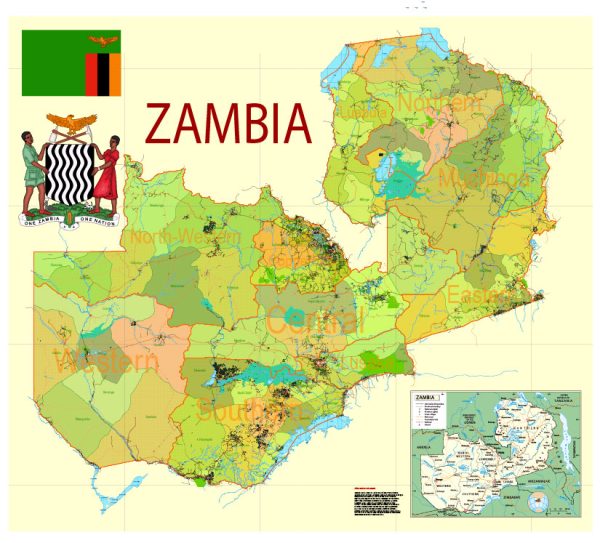Zambia is a landlocked country located in southern Africa. It has a diverse socio-economic landscape. Here is a description of Zambia’s socio-economic situation:
- Economy: Zambia’s economy is primarily based on mining and agriculture. The country is known for its rich reserves of copper, which is a significant contributor to its export revenue. The global demand for copper and other minerals has a substantial impact on Zambia’s economy. However, the economy has faced challenges due to fluctuations in commodity prices.
- Agriculture: Agriculture plays a crucial role in Zambia’s economy, employing a significant portion of the population. The main crops grown include maize, sorghum, millet, and various cash crops. Challenges such as climate change, access to markets, and infrastructure limitations have affected the sector’s growth.
- Poverty: Zambia, like many other African nations, faces issues of poverty and income inequality. A significant portion of the population lives below the poverty line, and there is a disparity in wealth distribution between urban and rural areas.
- Education: Zambia has made efforts to improve its education system, with significant progress in increasing access to education. However, challenges like low literacy rates and insufficient resources for education remain.
- Healthcare: Access to healthcare is a challenge, especially in rural areas. HIV/AIDS remains a significant public health concern, and the country has made efforts to combat the disease. Malaria and other infectious diseases are also prevalent.
- Infrastructure: Zambia has been investing in infrastructure development, including roads, bridges, and energy production. These improvements aim to enhance economic growth and connectivity within the country and the region.
- Political Situation: Zambia has a history of peaceful transitions of power through democratic elections. In 2021, Zambia held a presidential election, leading to a change in leadership. The outcome of this election could have a significant impact on the country’s socio-economic policies.
- Foreign Aid and Investment: Zambia has received foreign aid and investment from various international organizations and countries. These funds are often directed toward development projects and poverty alleviation.
- Rural-Urban Disparities: There are significant differences in socio-economic conditions between urban and rural areas. Urban centers like Lusaka have better infrastructure, access to services, and employment opportunities compared to rural regions.
- Cultural Diversity: Zambia is known for its cultural diversity, with over 70 different ethnic groups. This cultural diversity contributes to the country’s rich cultural heritage and traditions.


 Author: Kirill Shrayber, Ph.D.
Author: Kirill Shrayber, Ph.D.